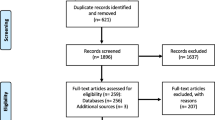Abstract
Communities across the globe are faced with a rapidly aging society, where age is the main risk factor for cognitive decline and development of Alzheimer’s and related diseases. Despite extensive research, there have been no successful treatments yet. A rare group of individuals called “super-agers” have been noted to thrive with their exceptional ability to maintain a healthy brain and normal cognitive function even in old age. Studying their traits, lifestyles, and environments may provide valuable insight. This study used a data-driven approach to identify potential super-agers among 7121 UK Biobank participants and found that these individuals have the highest total brain volume, best cognitive performance, and lowest functional connectivity. The researchers suggest a novel hypothesis that these super-agers possess enhanced neural processing efficiency that increases with age and introduce a definition of the “neural efficiency index.” Furthermore, several other types of aging were identified and significant structural–functional differences were observed between them, highlighting the benefit of research efforts in personalized medicine and precision nutrition.






Similar content being viewed by others
Data Availability
The UK Biobank data used for this article requires a data user agreement approval. Please see www.ukbiobank.ac.uk for access.
References
Harada CN, Love MCN, Triebel KL. Normal cognitive aging. Clin Geriatr Med. 2013;29(4):737–52.
Goedert M, Spillantini MG. A century of Alzheimer’s disease. Science. 2006;314(5800):777–81.
Harrison TM, Weintraub S, Mesulam MM, Rogalski E. Superior memory and higher cortical volumes in unusually successful cognitive aging. J Int Neuropsychol Soc. 2012;18(6):1081–5.
Gefen T, Kawles A, Makowski-Woidan B, Engelmeyer J, Ayala I, Abbassian P, ... & Geula C. Paucity of entorhinal cortex pathology of the Alzheimer’s type in SuperAgers with superior memory performance. Cereb Cortex.2021:31(7):3177–83.
Hashimoto K, Kouno T, Ikawa T, Hayatsu N, Miyajima Y, Yabukami H, ... Carninci P. Single-cell transcriptomics reveals expansion of cytotoxic CD4 T cells in supercentenarians. Proc Natl Acad Sci. 2019;116(48):24242–51.
Allman JM, Tetreault NA, Hakeem AY, Manaye KF, Semendeferi K, Erwin JM, ... Hof PR. The von Economo neurons in frontoinsular and anterior cingulate cortex in great apes and humans. Brain Struct Funct. 2010;214:495–517.
Gefen T, Peterson M, Papastefan ST, Martersteck A, Whitney K, Rademaker A, ... Geula C. Morphometric and histologic substrates of cingulate integrity in elders with exceptional memory capacity. J Neurosci. 2015;35(4):1781–91.
Hampel H, Blennow K, Shaw LM, Hoessler YC, Zetterberg H, Trojanowski JQ. Total and phosphorylated tau protein as biological markers of Alzheimer’s disease. Exp Gerontol. 2010;45(1):30–40.
Rogalski EJ. Don’t forget—Age is a relevant variable in defining SuperAgers. Alzheimer’s & Dementia: Diagnosis, Assessment & Disease Monitoring. 2019;11:560.
Amariglio RE, Donohue MC, Marshall GA, Rentz DM, Salmon DP, Ferris SH, Sperling RA. Tracking early decline in cognitive function in older individuals at risk for Alzheimer disease dementia: The Alzheimer’s disease cooperative study cognitive function instrument. JAMA Neurology. 2015;72(4):446–54.
Sudlow C, Gallacher J, Allen N, Beral V, Burton P, Danesh J, ... Collins R. UK biobank: an open access resource for identifying the causes of a wide range of complex diseases of middle and old age. PLoS Med. 2015;12(3):e1001779.
Lyall DM, Cullen B, Allerhand M, Smith DJ, Mackay D, Evans J, ... Pell JP. Cognitive test scores in UK Biobank: data reduction in 480,416 participants and longitudinal stability in 20,346 participants. PloS One. 2016;11(4):e0154222.
Rosseel Y. lavaan: An R package for structural equation modeling. J Stat Softw. 2012;48:1–36.
Rajalingam N, Ranjini K. Hierarchical clustering algorithm-a comparative study. Int J Comput Appl. 2011;19(3):42–6.
Odong TL, Van Heerwaarden J, Jansen J, van Hintum TJ, Van Eeuwijk FA. Determination of genetic structure of germplasm collections: are traditional hierarchical clustering methods appropriate for molecular marker data? Theor Appl Genet. 2011;123:195–205.
Kane MJ, Engle RW. The role of prefrontal cortex in working-memory capacity, executive attention, and general fluid intelligence: An individual-differences perspective. Psychon Bull Rev. 2002;9(4):637–71.
Ketchen DJ, Shook CL. The application of cluster analysis in strategic management research: an analysis and critique. Strateg Manag J. 1996;17(6):441–58.
Tucker MA, Stern Y. Cognitive reserve in aging. Curr Alzheimer Res. 2011;8(4):354–60.
Mosconi L, Brys M, Glodzik-Sobanska L, De Santi S, Rusinek H, De Leon MJ. Early detection of Alzheimer’s disease using neuroimaging. Exp Gerontol. 2007;42(1-2):129–38.
Daulatzai MA. Cerebral hypoperfusion and glucose hypometabolism: Key pathophysiological modulators promote neurodegeneration, cognitive impairment, and Alzheimer’s disease. J Neurosci Res. 2017;95(4):943–72.
McDonough IM, Madan CR. Structural complexity is negatively associated with brain activity: a novel multimodal test of compensation theories of aging. Neurobiol Aging. 2021;98:185.
Mosconi L, Sorbi S, de Leon MJ, Li Y, Nacmias B, Myoung PS, ... Pupi A. Hypometabolism exceeds atrophy in presymptomatic early-onset familial Alzheimer's disease. J Nucl Med. 2006;47(11):1778–86.
Busche MA, Konnerth A. Neuronal hyperactivity–A key defect in Alzheimer's disease? Bioessays. 2015;37(6):624–32.
Willette AA, Modanlo N, Kapogiannis D. Insulin resistance predicts medial temporal hypermetabolism in mild cognitive impairment conversion to Alzheimer disease. Diabetes. 2015;64:1933.
Marchitelli R, et al. Simultaneous resting-state FDG-PET/FMRI in Alzheimer disease: relationship between glucose metabolism and intrinsic activity. Neuroimage. 2018;176:246.
Ullmann T, Hennig C, Boulesteix AL. Validation of cluster analysis results on validation data: A systematic framework. Wiley Interdisciplinary Reviews: Data Mining and Knowledge Discovery. 2022;12(3):e1444.
Acknowledgements
This research has been conducted using the UK Biobank Resource under Application Number 25057.
Funding
This work was supported by the Iowa State University, National Institutes of Health (NIH) R00 AG047282 and National Institute of Aging (NIA) P30AG10161.
Author information
Authors and Affiliations
Corresponding author
Ethics declarations
Conflict of interest
The authors declare no competing interests.
Additional information
Publisher's note
Springer Nature remains neutral with regard to jurisdictional claims in published maps and institutional affiliations.
Supplementary Information
Below is the link to the electronic supplementary material.
About this article
Cite this article
Klinedinst, B.S., Kharate, M.K., Mohammadiarvejeh, P. et al. Exploring the secrets of super-aging: a UK Biobank study on brain health and cognitive function. GeroScience 45, 2471–2480 (2023). https://doi.org/10.1007/s11357-023-00765-x
Received:
Accepted:
Published:
Issue Date:
DOI: https://doi.org/10.1007/s11357-023-00765-x




